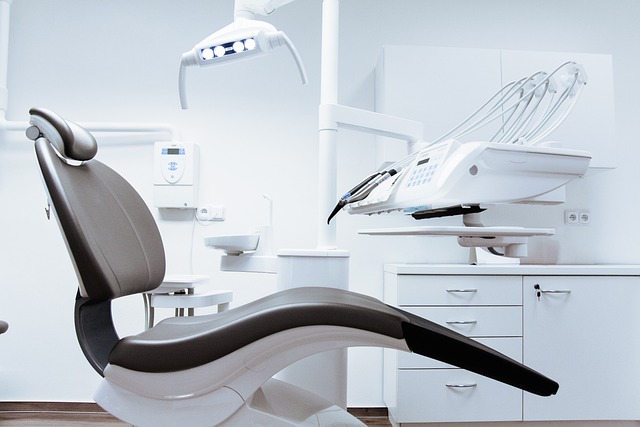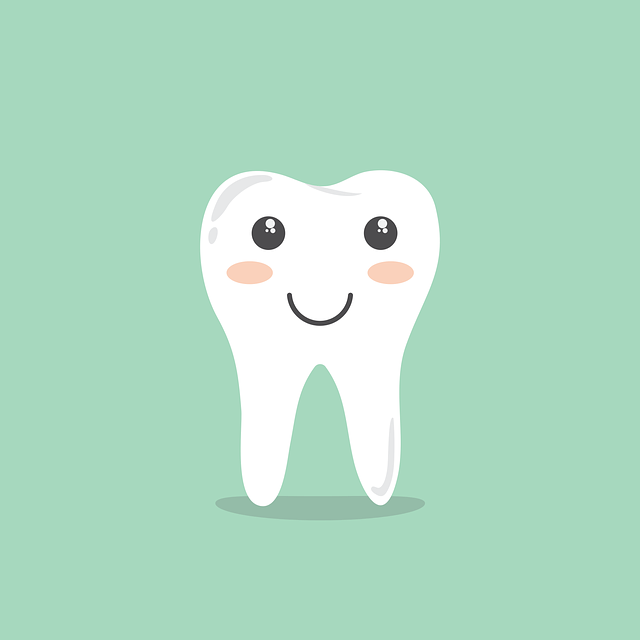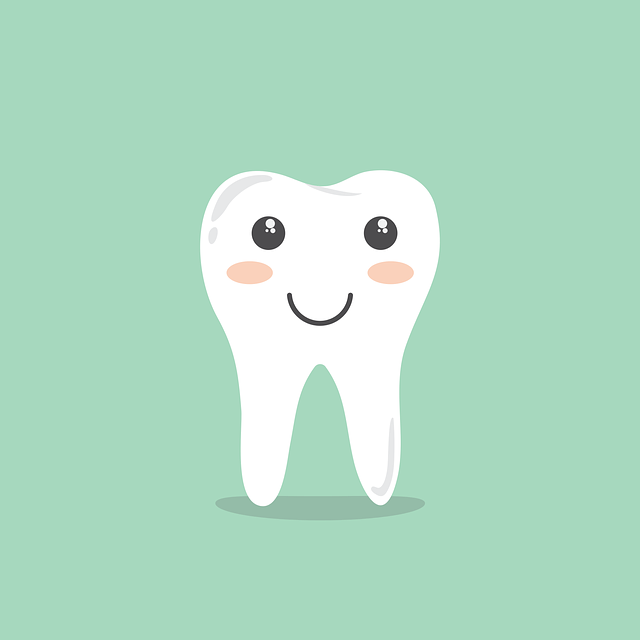When to Begin Chlorhexidine Use after Tooth Extraction
Welcome to our informative article on the topic of “When to Begin Chlorhexidine Use after Tooth Extraction.” If you’ve recently undergone a tooth extraction procedure, it’s important to take the necessary steps to promote a smooth recovery process and avoid any potential complications. One commonly recommended approach is the use of chlorhexidine, a powerful antiseptic that helps to prevent infections and maintain oral hygiene. In this article, we will shed light on the optimal timing for initiating chlorhexidine use after tooth extraction, including the reasons behind the delay and the potential benefits of this practice. So, grab a cup of tea, make yourself comfortable, and let’s dive right into the world of post-tooth extraction care!
1. Understanding the Importance of Chlorhexidine following Tooth Extraction
After undergoing a tooth extraction, it is crucial to prioritize proper care to ensure quick healing and prevent potential complications. One of the most effective ways to promote healing and reduce the risk of infection is by using chlorhexidine, a powerful antiseptic mouthwash. By understanding the importance of chlorhexidine and incorporating it into your post-tooth extraction routine, you can significantly improve your recovery process.
Here are some key reasons why chlorhexidine should be an essential part of your post-tooth extraction care:
- Fights against bacteria: Chlorhexidine has broad-spectrum activity against various bacteria, fungi, and viruses that could potentially infect the extraction site. By using chlorhexidine mouthwash, you can effectively eliminate harmful microorganisms and minimize the risk of infection.
- Reduces inflammation: After a tooth extraction, the surrounding tissues may become inflamed, causing discomfort and delaying the healing process. Chlorhexidine has anti-inflammatory properties that help alleviate swelling and promote faster recovery.
- Prevents dry socket: Dry socket is a common complication that occurs when the blood clot at the extraction site dislodges or dissolves too quickly. This condition can be extremely painful and delay healing. Rinsing with chlorhexidine can help maintain appropriate oral hygiene and prevent dry socket by minimizing the chance of dislodging the clot.
By incorporating chlorhexidine into your oral care routine following a tooth extraction, you can ensure a healthier and speedier recovery. Discuss with your dentist or oral surgeon to determine the most appropriate concentration and frequency for your specific case.

2. The Role of Chlorhexidine in Promoting Oral Health Post Tooth Extraction
After undergoing a tooth extraction, it is important to take proper care of your oral health to ensure a smooth and speedy recovery. One helpful tool in this regard is chlorhexidine. This powerful antiseptic solution plays a crucial role in promoting oral health post tooth extraction by preventing infections and reducing discomfort. Here’s how it can benefit you:
1. Prevents Infections: Chlorhexidine acts as a shield against harmful bacteria that may enter the extraction site, reducing the risk of developing an infection. It disrupts the bacterial cell membranes, inhibiting their growth and effectively controlling the spread of potential infection. Applying chlorhexidine to the extraction site can significantly decrease the chances of experiencing postoperative complications.
2. Reduces Discomfort: Tooth extractions can cause varying degrees of discomfort and swelling. Chlorhexidine can help alleviate these symptoms by reducing inflammation and swelling. The solution’s gentle antimicrobial properties minimize the risk of inflammation-related complications, allowing you to recover more comfortably and quickly. By rinsing your mouth with chlorhexidine as prescribed by your dentist, you can take proactive steps to minimize discomfort during the healing process.
3. When is the Best Time to Start Using Chlorhexidine after Tooth Extraction?
After a tooth extraction, taking proper care of the extraction site is crucial to ensure a smooth healing process. One common recommendation is to use chlorhexidine mouthwash to prevent infection and promote healing. But Here are a few important factors to consider:
1. Consult your dentist: Every mouth and tooth extraction is unique, so it’s essential to consult your dentist for personalized advice. Your dentist will be able to assess your specific situation and provide guidance on when to start using chlorhexidine.
2. Wait for the blood clot to form: Before using chlorhexidine, it’s crucial to allow a blood clot to form in the extraction site. This clot helps protect the exposed area and aids in the healing process. It typically takes around 24-48 hours for the clot to form. Avoid swishing or rinsing your mouth too vigorously during this time to prevent dislodging the clot.

4. A Step-by-Step Guide: Incorporating Chlorhexidine into your Post-Extraction Oral Care Routine
Incorporating chlorhexidine into your post-extraction oral care routine is a simple and effective way to ensure proper healing and prevent infection. Follow these step-by-step guidelines to seamlessly add this valuable addition to your daily dental hygiene routine:
1. Consult your dentist: Before starting any new oral care routine, it is always best to consult your dentist. They can provide personalized advice based on your specific needs and ensure that chlorhexidine is a suitable choice for you.
2. Select the right product: Chlorhexidine is available in different forms, such as mouth rinses, gels, or sprays. Choose the one that best suits your preference and is recommended by your dentist.
- Mouth rinse: This is the most common and convenient form of chlorhexidine. After brushing your teeth, use the recommended amount of mouth rinse, swish it around your mouth for 30 seconds, and then spit it out. Avoid eating or drinking for at least 30 minutes after rinsing.
- Gel or spray: If you prefer a more targeted application, a gel or spray might be a better option. Apply a small amount of the product directly to the affected area after gently cleaning it with a soft toothbrush. Follow the instructions provided by your dentist or the product packaging for the best results.
3. Incorporate into your daily routine: To ensure consistent use and maximize the benefits of chlorhexidine, incorporate it into your daily oral care routine. Ideally, use it at the same time every day, such as before bed or after breakfast. Consistency is key for optimal results.
4. Follow the recommended duration: Your dentist will provide instructions on how long to use chlorhexidine. Typically, it is recommended to use it for one to two weeks, but this may vary depending on your specific situation. Follow the recommended duration to promote healing and maintain oral hygiene.

5. Exploring the Benefits and Risks of Using Chlorhexidine after Tooth Extraction
After a tooth extraction, your dentist may recommend the use of chlorhexidine as a mouth rinse to aid in the healing process. Chlorhexidine is a powerful antiseptic that can help prevent infections and reduce the risk of complications following the extraction. Here are some benefits of using chlorhexidine after a tooth extraction:
- Infection Prevention: Chlorhexidine has strong antimicrobial properties that can help eliminate harmful bacteria in the mouth. By reducing the number of bacteria, it can prevent infections from developing in the extraction site.
- Reduced Swelling: Using chlorhexidine as directed can help minimize swelling and inflammation around the extraction site, allowing for a more comfortable recovery.
- Promotes Healing: Chlorhexidine supports the natural healing process by creating an optimal environment for tissue regeneration. It can help accelerate the formation of new gum tissue and prevent the development of dry sockets.
While chlorhexidine can offer many benefits, it is essential to be aware of potential risks associated with its use:
- Staining: Chlorhexidine has the potential to cause temporary discoloration of the teeth or tongue. This side effect is usually harmless and subsides once the use of chlorhexidine is discontinued.
- Taste Alteration: Some individuals may experience a change in taste perception while using chlorhexidine. This is typically temporary and should resolve after the treatment is completed.
- Mucosal Irritation: In rare cases, chlorhexidine may cause minor irritation or allergic reactions in the oral tissues. If you experience any discomfort or unusual symptoms, consult your dentist immediately.
Remember to follow your dentist’s instructions when using chlorhexidine after a tooth extraction. It can be a valuable addition to your post-extraction care routine, helping to ensure a smooth and successful recovery. If you have any concerns or questions, don’t hesitate to reach out to your dentist for further guidance.

6. Paving the Way to Optimal Healing: How Chlorhexidine Can Speed Up the Recovery Process
When it comes to healing after a surgery or an injury, we all want to ensure a speedy recovery. That’s where chlorhexidine comes in. This powerful antiseptic has been proven to not just prevent infections but also accelerate the healing process. Let’s take a closer look at how chlorhexidine can pave the way to optimal healing.
First and foremost, chlorhexidine is incredibly effective at killing bacteria. By applying chlorhexidine to wounds or surgical incisions, you can significantly reduce the risk of infection. Its broad-spectrum antimicrobial properties make it highly effective against various types of bacteria, including both gram-positive and gram-negative strains. This means that no matter what kind of infection-causing bacteria your wound may be exposed to, chlorhexidine has got you covered.
- Chlorhexidine not only kills bacteria but also prevents their regrowth, ensuring a long-lasting protection.
- Its fast-acting nature makes it perfect for urgent care situations where time is of the essence.
- Unlike some other antiseptics, chlorhexidine doesn’t sting or cause discomfort during application.
When it comes to promoting healing, chlorhexidine really shines. Not only does it eliminate harmful bacteria, but it also creates an optimal environment for your body to repair itself. By keeping wounds clean and free from infection, chlorhexidine allows the healing process to occur without any delays or setbacks. Whether you’re recovering from surgery or nursing an injury, chlorhexidine can be a game-changer in your healing journey.
7. Expert Recommendations: Timing and Duration of Chlorhexidine Usage after Tooth Extraction
When it comes to the timing and duration of chlorhexidine usage after tooth extraction, experts recommend following a few key guidelines to ensure optimal results and oral health. Here are some expert recommendations to consider:
- Timely initiation: It is crucial to start using chlorhexidine mouthwash as directed by your dentist or oral surgeon immediately after tooth extraction. This helps in reducing the risk of infections and promoting healing.
- Maintain consistency: To reap the maximum benefits, maintain a consistent routine of using chlorhexidine mouthwash. It is typically recommended to use it twice a day, preferably in the morning and at night, for a specific duration. Your dental professional can provide the correct instructions based on your individual circumstances.
- Follow the recommended duration: Experts emphasize the importance of following the recommended duration of chlorhexidine usage. Typically, this ranges from seven to fourteen days post-extraction, depending on the complexity of the procedure and the underlying conditions.
By strictly adhering to these expert recommendations, you can effectively harness the potential of chlorhexidine mouthwash to support your recovery process after tooth extraction. Remember to consult with your dentist for personalized advice and guidance tailored to your dental needs.
8. Top Tips for Effectively Incorporating Chlorhexidine into your Daily Oral Care Routine
Whether you’ve been prescribed chlorhexidine mouthwash by your dentist or you’re simply looking to enhance your oral care routine, incorporating chlorhexidine can be a great addition to your daily dental hygiene. Here are some top tips to help you effectively integrate chlorhexidine into your daily oral care routine:
- Follow your dentist’s instructions: It is essential to carefully follow the instructions provided by your dentist or healthcare professional when using chlorhexidine. They will prescribe the appropriate concentration and duration for your specific needs.
- Rinse after brushing: After brushing your teeth, take a small amount of chlorhexidine mouthwash and rinse your mouth thoroughly. Swish it around for at least 30 seconds to cover all areas of your mouth for maximum effectiveness.
- Use it at a different time: If you typically use mouthwash immediately after brushing, it’s best to wait at least 30 minutes before using chlorhexidine. This is because some components in toothpaste can reduce the effectiveness of chlorhexidine if used together.
- Maintain a regular routine: To experience the full benefits of chlorhexidine, it is crucial to incorporate it into your oral care routine consistently. Make it a habit to use chlorhexidine at the same time every day.
Remember, chlorhexidine mouthwash can provide additional protection against gum disease and maintain good oral health, but it should not replace brushing and flossing. Keep in mind that chlorhexidine may cause temporary staining of the teeth or alter your taste perception, which usually disappears after discontinuing its use.
In case you experience any unusual side effects, such as severe irritation or allergic reactions, it’s important to contact your dentist or healthcare professional immediately. By effectively incorporating chlorhexidine into your daily oral care routine and following the guidelines provided, you can promote optimal oral hygiene and maintain a healthy smile.
9. Debunking Common Myths: Clearing the Confusion around Chlorhexidine Use after Tooth Extraction
There are several misconceptions surrounding the use of chlorhexidine after tooth extraction that can lead to confusion. Let’s debunk these myths and clear things up:
Myth 1: Chlorhexidine can cause staining of teeth.
- Fact: While chlorhexidine can cause temporary staining of teeth in some cases, it is usually limited to individuals with poor oral hygiene or those who use chlorhexidine for an extended period of time. Regular brushing and professional cleanings can help prevent or remove any stains that may occur.
Myth 2: Chlorhexidine should be used immediately after surgery.
- Fact: It is recommended to wait at least 24 hours after tooth extraction before using chlorhexidine mouthwash. During the initial healing phase, it’s important to allow the blood clot to form and stabilize in the extraction site. Once the clot is stable, usually after 24 hours, you can begin rinsing with chlorhexidine as instructed by your dentist.
- Remember, always follow the instructions provided by your dentist or oral surgeon for the proper use of chlorhexidine after tooth extraction. If you have any concerns or questions, don’t hesitate to reach out to your dental healthcare provider for clarification.
10. Making the Most of Chlorhexidine: Maximizing the Positive Impact on Oral Health
Chlorhexidine is a powerful antimicrobial agent that can greatly improve oral health when used correctly. To make the most of chlorhexidine, there are a few key tips and tricks to keep in mind:
1. Follow the instructions: It is important to carefully read and follow the instructions provided with the chlorhexidine product. This includes the recommended dosage, frequency of use, and the duration of treatment. Following these instructions will ensure that you are using chlorhexidine effectively and safely.
2. Use for the recommended duration: Chlorhexidine is most effective when used for the full recommended duration. Often, this means using it for a prescribed period of time, such as two weeks. Even if symptoms improve before the recommended duration is over, it is crucial to continue using chlorhexidine as directed in order to fully eradicate any remaining bacteria.
3. Don’t rinse with water immediately: After using chlorhexidine, it is advised not to rinse your mouth with water immediately. Rinsing immediately after use may reduce the effectiveness of chlorhexidine. Instead, wait at least 30 minutes before eating or drinking and avoid rinsing the mouth with water during that time.
4. Observe good oral hygiene practices: While chlorhexidine can be a valuable addition to your oral health routine, it should not replace regular brushing and flossing. Maintain a good oral hygiene routine with regular brushing, flossing, and visiting the dentist for check-ups and cleanings.
Frequently Asked Questions
Q: What is chlorhexidine and why is it important after tooth extraction?
A: Chlorhexidine is a powerful antiseptic that helps prevent infections and promotes healing after a tooth extraction. It is extremely effective in reducing the risk of complications and maintaining oral hygiene during the healing process.
Q: When should I start using chlorhexidine after a tooth extraction?
A: It is generally recommended to start using chlorhexidine mouthwash on the day after your tooth extraction. This allows the initial healing process to begin without interference, while still ensuring early protection against potential infections.
Q: Can I use chlorhexidine immediately after a tooth extraction?
A: Although it is safe to use chlorhexidine immediately after a tooth extraction, it is best to wait at least 24 hours before starting to use it. This allows the clotting process to occur naturally and avoids any potential disruption to the initial healing phase.
Q: How should I use chlorhexidine after a tooth extraction?
A: Rinse your mouth with chlorhexidine mouthwash twice a day, usually in the morning and before bedtime. Take a small amount of the mouthwash, swish it around your mouth for 30 seconds, and then spit it out. Do not eat or drink for 30 minutes after using chlorhexidine, to maximize its effectiveness.
Q: How long should I use chlorhexidine after a tooth extraction?
A: The duration of chlorhexidine use after a tooth extraction can vary depending on the severity of the extraction, your dentist’s instructions, and your overall oral health. However, it is commonly recommended to use it for 7 to 10 days, or as directed by your dentist.
Q: Are there any side effects of using chlorhexidine?
A: Some people may experience temporary side effects when using chlorhexidine, such as tooth staining, altered taste perception, or mild irritation of the gums. These effects are usually harmless and will disappear once you stop using the mouthwash. However, it is advisable to consult with your dentist if you experience any prolonged or concerning side effects.
Q: Can I stop using chlorhexidine if my extraction site looks and feels fine?
A: Even if your extraction site looks and feels fine, it is important to follow your dentist’s guidance and complete the recommended course of chlorhexidine use. This will ensure that any potential bacteria or infections are fully eliminated, reducing the risk of complications in the long run.
Q: Are there any alternatives to chlorhexidine for post-extraction care?
A: Chlorhexidine is the most commonly recommended antiseptic mouthwash for post-extraction care. However, your dentist may suggest alternatives such as saltwater rinses or other antimicrobial mouthwashes. It is crucial to consult with your dentist to determine the most suitable option for your specific case.
Q: How can I enhance the healing process after a tooth extraction?
A: In addition to using chlorhexidine, you can aid the healing process by maintaining good oral hygiene. This includes brushing gently around the extraction site, avoiding hard or sticky foods, not smoking, and following any additional instructions provided by your dentist. It is important to attend all recommended follow-up appointments to ensure proper healing.
Conclusion
In summary, understanding the appropriate timing for beginning chlorhexidine use after a tooth extraction is essential for optimizing healing and preventing potential infections. By following the guidance provided by your dentist or oral surgeon, you can rest assured that you are on the right path to a speedy and complication-free recovery.
Remember, it’s important to prioritize good oral hygiene and follow your dentist’s instructions meticulously during this crucial period. While chlorhexidine can play a vital role in post-extraction care, it is not a substitute for regular brushing, flossing, and professional dental cleanings.
So, whether your extraction was a simple procedure or a more complex one, always consult your dentist before starting chlorhexidine or any other oral hygiene products. They have your best interest at heart and can guide you through the proper use of chlorhexidine and equip you with any additional tips or recommendations to ensure your recovery goes smoothly.
Taking care of your teeth and gums is an investment in your overall health, and educated decisions regarding chlorhexidine use are a part of that journey. By staying informed and working closely with your dental professional, you’re well on your way to maintaining a healthy and beautiful smile for years to come.





